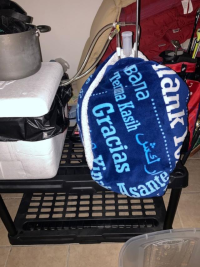williamneal
Member
Hello all,
This is a batch of Cream Ale that has been fermenting for about 10 days and still has clear bubbles floating in the fermanter. Is this an infection?
Thanks,
Bill

This is a batch of Cream Ale that has been fermenting for about 10 days and still has clear bubbles floating in the fermanter. Is this an infection?
Thanks,
Bill




